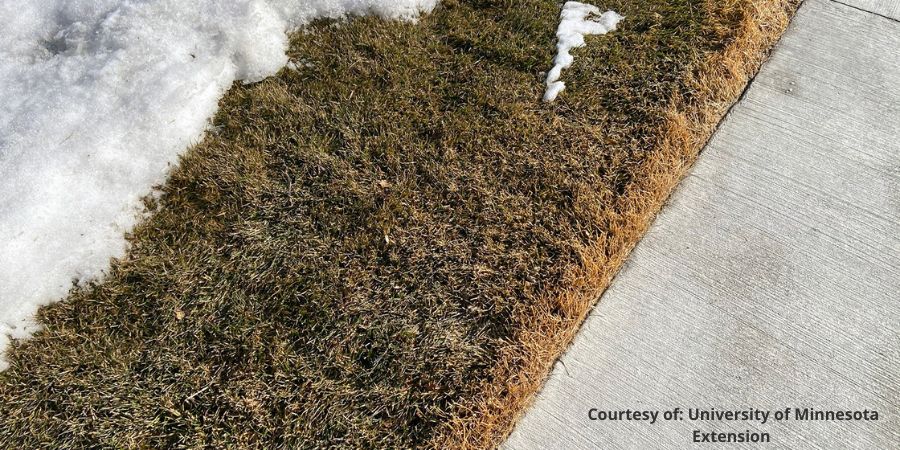How to Repair Salt Damage to Your Lawn
- Milorganite AgronomistMarch 11, 2023
We use rock salt to help melt snow and ice on roads, driveways, and sidewalks. It helps prevent falls and accidents, but regular use of rock salt can easily damage adjacent lawns and plants and may damage concrete and blacktop.
Salt Damage to Lawns
Turf along walks and driveways is most susceptible to being damaged by rock salt. Salt, like the salts in manufactured fertilizers, burns grass blades and plants. Damage can also be caused when roots absorb the salt.
High salt levels in turf can cause root damage, increase disease problems and decrease drought resistance. If the damage is minimal—only a few inches of turf boarding driveways and walks—I recommend leaving it alone. Spring rain should wash away the salt. Healthy lawns will fill in the damaged areas.
If the damage is more extensive, you may need to repair the area. When temperatures warm up, patch the bare spots in the lawn using clean soil and quality grass seed.
How to Patch Salt-damaged and Bare Spots in the Lawn
- Water the salt-damaged area to wash away as much salt as possible.
- Remove damaged turf.
- For bare spots, rake to remove dead grass and weeds, and to loosen the soil.
- You can purchase a lawn repair kit that includes seed and mulch, or you can make your own. Mix grass seed, soil or compost, and Milorganite .
- Sprinkle the grass seed or seed mix on the prepared soil and lightly rake it in for good seed-to-soil contact. Your goal is to distribute 15 – 20 grass seeds per square inch.
- Spread a layer of mulch, such as peat moss or hay to help retain moisture.
- Water as needed to keep the top few inches of soil moist.
- Resume mowing when the grass reaches 3–4” and a decent root system is forming.
How to Prevent Rock Salt Damage to Your Lawn
One way to help reduce salt damage is to create a border of bricks or stone along walks and drives. It’s even better to be proactive and avoid salt damage altogether. Look for ice-melt products that contain potassium chloride, which is less likely to burn the grass.
Use any ice-melt product sparingly. A coffee mug of rock salt, for example, is enough to treat an entire 20-foot driveway or ten sidewalk squares! Excessive use of rock salt can leach into the soil, and washes into sewers and waterways. Once the salt is in the environment, it doesn’t go away and threatens freshwater resources and our drinking water.


